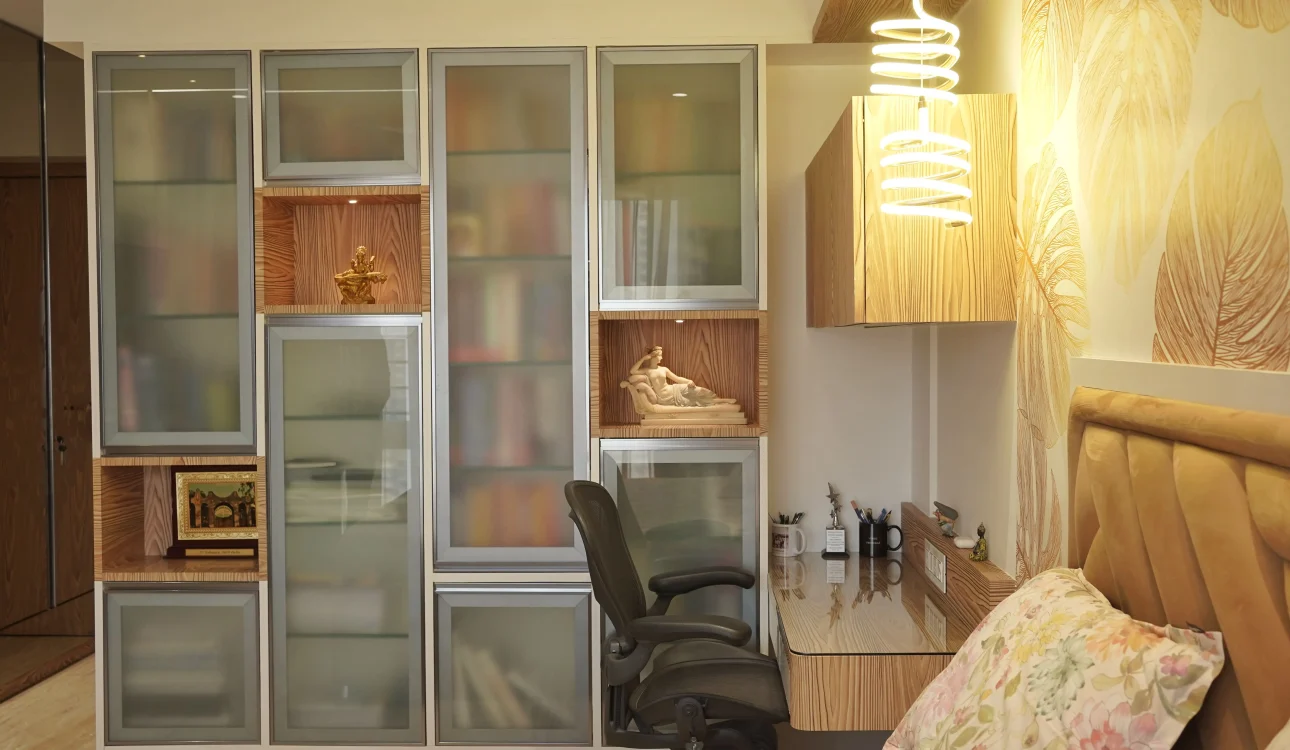Creating a strong first impression with interior design involves thoughtful planning and attention to detail. Here are some tips to help you achieve a striking and welcoming entrance:
1. Focus on the Entryway
- Statement Pieces: Use a bold piece of artwork, a stylish console table, or a unique mirror to catch the eye as soon as someone enters.
- Lighting: Ensure good lighting with a chandelier, pendant light, or stylish table lamps. Natural light is also a plus.
- Clutter-Free: Keep the entryway clean and organized. Use stylish storage solutions like baskets, hooks, or a small cabinet.
2. Use Color Strategically
- Neutral Base: Start with a neutral color palette for walls and large furniture pieces. This creates a sophisticated backdrop.
- Pops of Color: Add interest with accent walls, throw pillows, rugs, or artwork in bold or complementary colors.
3. Incorporate Texture
- Variety of Textures: Use a mix of textures like wood, metal, glass, and textiles to add depth and interest.
- Soft Furnishings: Layering rugs, throws, and cushions can make a space feel more inviting and cozy.
4. Personal Touches
- Art and Decor: Display art, sculptures, or decor items that reflect your personality and style.
- Family Photos: Incorporate personal photos in a stylish way, such as a gallery wall or a digital frame.
5. Furniture Arrangement
- Flow and Function: Arrange furniture to create a natural flow and make spaces functional and inviting.
- Focal Points: Highlight key areas with focal points like a fireplace, a large window, or a significant piece of furniture.
6. Greenery and Nature
- Indoor Plants: Add life and color with indoor plants. Choose varieties that thrive indoors and complement your decor.
- Natural Elements: Incorporate natural materials like wood, stone, or bamboo to bring warmth and organic vibes.
7. Attention to Detail
- Hardware and Fixtures: Upgrade hardware and fixtures for a more polished look. Think of cabinet handles, light switches, and door knobs.
- Consistent Style: Ensure a cohesive style throughout your home, from the entryway to the main living areas.
8. Use of Mirrors
- Space and Light: Strategically placed mirrors can make a space feel larger and brighter. Use them to reflect light and create depth.
- Decorative Mirrors: Choose mirrors with interesting frames to add a decorative element.
9. Comfort and Practicality
- Seating: Provide comfortable seating options in the entryway and living areas.
- Rugs: Use rugs to define spaces and add warmth and texture.
10. Scent and Sound
- Aromatherapy: Use subtle scents like essential oils or scented candles to create a pleasant atmosphere.
- Background Music: Consider soft background music to enhance the ambiance and make guests feel at ease.
By combining these elements, you can create an inviting and impressive interior that leaves a lasting impression on anyone who enters your home.
Benefits of interior design for the best first impression
Creating a strong first impression through interior design has several significant benefits, both for the inhabitants and visitors. Here are some key advantages:
1. Enhanced Aesthetic Appeal
- Visual Impact: Thoughtful design choices ensure that your space is visually appealing, making it more enjoyable for you and your guests.
- Style Statement: A well-designed interior reflects your personal style and taste, showcasing your personality and sophistication.
2. Increased Property Value
- Market Appeal: Homes with impressive interiors often attract more potential buyers and can command higher prices in the real estate market.
- First Impressions: Buyers or visitors are more likely to have a positive perception of the entire property based on a strong first impression.
3. Improved Functionality
- Efficient Space Use: Good design maximizes the use of space, making it more functional and comfortable.
- Organization: Thoughtful design incorporates smart storage solutions, reducing clutter and making the home more organized.
4. Psychological Benefits
- Mood Enhancement: A well-designed space can positively affect your mood, creating a sense of peace, relaxation, and well-being.
- Stress Reduction: An organized, aesthetically pleasing environment can reduce stress and make daily life more enjoyable.
5. Social Benefits
- Welcoming Atmosphere: A beautiful and inviting home makes guests feel welcome and comfortable, enhancing social interactions.
- Entertaining: A well-designed space is more conducive to hosting gatherings and events, making socializing more enjoyable.
6. Branding and Personal Identity
- Personal Expression: Interior design allows you to express your individuality and lifestyle, making your home uniquely yours.
- Professional Image: For home offices or business environments, a well-designed space can convey professionalism and attention to detail.
7. Comfort and Convenience
- Ergonomics: Good design considers ergonomics, ensuring that furniture and layout promote comfort and ease of use.
- Accessibility: Thoughtful design can make a space more accessible and user-friendly for everyone, including those with mobility challenges.
8. Energy Efficiency
- Natural Light: Effective use of natural light reduces the need for artificial lighting, saving energy and creating a more pleasant atmosphere.
- Sustainable Choices: Incorporating energy-efficient appliances and sustainable materials can reduce environmental impact and utility costs.
9. Safety and Well-being
- Safe Environment: Good design includes safety features and ensures that spaces are free of hazards, promoting overall well-being.
- Health Considerations: Choosing non-toxic materials and ensuring proper ventilation contributes to a healthier living environment.
10. Increased Motivation and Productivity
- Inspiring Environment: A beautiful, well-organized space can inspire creativity and productivity, especially in work-from-home settings.
- Positive Daily Experience: Living in a well-designed home can make daily routines more enjoyable and less stressful.
In summary, investing in interior design not only enhances the visual appeal of your home but also improves functionality, comfort, and overall quality of life. It creates a welcoming environment that leaves a lasting impression on visitors and can significantly boost your property’s value and your personal well-being.
Easy way to find the best interior design
Finding the best interior design that suits your taste and needs can be a straightforward process if you approach it systematically. Here are some easy ways to find and achieve the best interior design for your space:
1. Identify Your Style
- Explore Online Platforms: Use websites like Pinterest, Houzz, and Instagram to gather inspiration and identify your preferred style. Create mood boards to visualize your ideas.
- Take Style Quizzes: Online quizzes on interior design websites can help you pinpoint your style preferences.
2. Set a Budget
- Determine Your Budget: Establish a realistic budget for your project. This helps narrow down your options and keeps you focused on what you can afford.
- Prioritize Spending: Decide which areas or items are most important to you and allocate more of your budget there.
3. Consult Magazines and Books
- Read Design Magazines: Magazines like Architectural Digest, Elle Decor, and Better Homes & Gardens offer a wealth of ideas and professional insights.
- Design Books: Invest in a few well-regarded design books that align with your style for detailed guidance and inspiration.
4. Visit Showrooms and Stores
- Local Showrooms: Visit local furniture stores and home decor showrooms to see and feel the products in person. This can give you a better sense of quality and scale.
- Home Expos: Attend home expos or interior design fairs to see a wide range of styles and meet designers.
5. Use Interior Design Apps
- Design Apps: Apps like Houzz, Roomstyler 3D Home Planner, and Home Design 3D allow you to experiment with different layouts and styles virtually.
- Augmented Reality: Use AR apps to visualize how furniture and decor will look in your space before making a purchase.
6. Hire a Professional Designer
- Interior Designers: If budget allows, hiring a professional designer can save time and ensure a cohesive and well-executed design.
- Consultations: Many designers offer one-time consultations to provide guidance and ideas, which can be a more affordable option.
7. Online Design Services
- E-Design Services: Websites like Modsy and Havenly offer online interior design services where you can get personalized design plans from professionals at a lower cost.
- Virtual Consultations: Many designers now offer virtual consultations, making professional advice more accessible.
8. DIY Projects and Tutorials
- DIY Blogs and Videos: Follow interior design blogs and YouTube channels that offer tutorials on DIY projects and decorating tips.
- Crafting and Upcycling: Get creative with DIY projects to personalize your space without spending a lot of money.
9. Network and Recommendations
- Ask for Recommendations: Seek recommendations from friends, family, or colleagues who have recently completed interior design projects.
- Join Design Communities: Participate in online forums or local design groups to exchange ideas and get feedback.
10. Stay Flexible and Open-Minded
- Experiment: Don’t be afraid to try new things and experiment with different styles and layouts.
- Evolve Your Style: Allow your design preferences to evolve over time as you discover what truly resonates with you.
By combining these strategies, you can efficiently find the best interior design approach that fits your style, budget, and needs. Whether you choose to work with a professional or take a DIY approach, the key is to stay informed, organized, and open to inspiration from various sources.
Conclusion
Creating a strong first impression through interior design involves a blend of strategic planning, personal expression, and attention to detail. The key points to remember include focusing on the entryway, using color and texture effectively, incorporating personal touches, and ensuring good lighting. Additionally, thoughtful furniture arrangement, the inclusion of greenery, attention to hardware and fixtures, and the use of mirrors can significantly enhance the aesthetic appeal of a space.
A well-designed interior not only boosts the visual appeal and functionality of your home but also positively impacts mood, social interactions, and property value. Whether you opt for professional help or a DIY approach, understanding your style, setting a budget, and utilizing various resources like online platforms, showrooms, and design apps can make the process easier and more enjoyable. Ultimately, a welcoming and stylish interior creates a lasting impression, reflecting your personality and making your home a more comfortable and inviting place.

